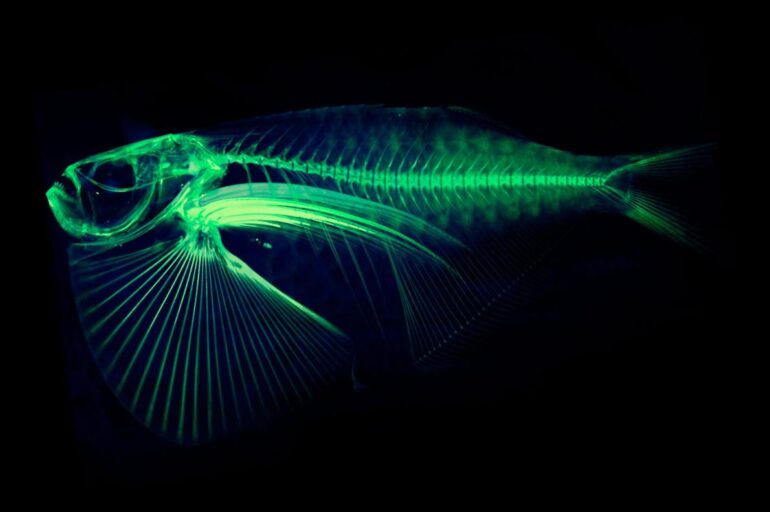One scientist began his quest by wondering how sharks and rays are able to move like other fish despite have a skeleton make of cartilage instead of bones. Fast forward 15 years and Adam Summers has an impressive collection of CT scans with the goal to digitize every species of fish on earth.
By using a computed tomography (CT) scanner to take digital images Summers, a professor at the University of Washington, is able to get a 3D image that is helping him not only answer the question about rays and sharks, but about how fish move in general. His images can potentially help others solve basic riddles of biomechanics.
“I look at how fish stick to things, how they burrow, how we can use the natural world as an inspiration for new materials and new ways of doing things,” says Summers. “I can use the skeleton of burrowers as inspiration for robots that burrow. I’m also working on a project that involves armor—how fish armor has evolved, how they solve the problem of being armored but still being maneuverable.”

But scanning is so expensive that when he first began creating these images as a graduate student at the University of Massachusetts Amherst and at Harvard University’s Museum of Comparative Zoology, he mostly begged for time on scanners at Boston-area medical centers.
With some much needed funding, he has been able to secure his own scanner eliminating the hurdle of finding CT machines to use. Although an idea that could be a lifetime of work, he suspects he’ll could actually able to scan them all in a few years with some outside assistance. So far he has scanned 540 species.
[NatGeo}



